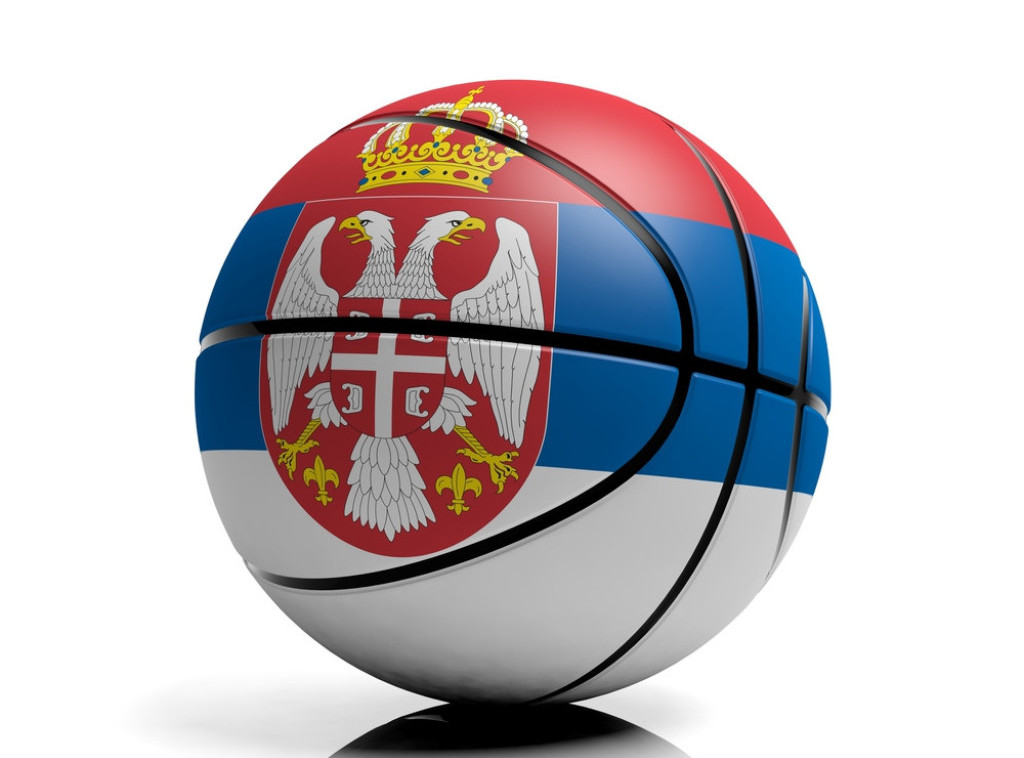The witching hour approaches, and Halloween is nearly here... What will you be reading to get in the morbid mood?
If you’ve already got your ideal Halloween costume ready and you’re all set when it comes to your ideal spooky movie night, the Euronews Culture team are here to suggest some book titles we think would make for some wickedly good reads...
Reader beware - you're in for a scare.
‘It Came from Beneath the Sink!’ by R.L. Stine
As a child of the 90s, R.L. Stine’s spooky Goosebumps books defined most of my formative reading years. Their garishly illustrated covers - special hardback editions of which had light up eyes and made gnarly sounds - only added to the nervous anticipation of devouring them.
Oddly, the one that scared me most is probably the silliest in the series - a story about an evil sponge with glowing red peepers and a penchant for causing bad luck. Whoever finds it can’t get rid of it without dying - but it’s a children’s book, so a loophole is found in cuddling the sponge to death (not a bad way to go).
Unless you have trypophobia (a fear of objects with repetitive small holes), it’ll sound very un-scary - but it tapped into a legitimate fear of mine: the cupboard under the sink. I’d dared to open ours once to find a haunting mass of damp cloths, discoloured chemical bottles and - worst of all, an absolutely giant, thick-bodied spider on a dehydrated sponge. In my worst nightmares, I still sometimes see it. In this sense, R.L. Stine made me contemplate the horrifying secrets that can lurk within the hidden places where we feel safest, and how once you’ve discovered them, you’re haunted forever. I still keep my washing-up sponge next to the sink instead. AB
‘A Sunny Place For Shady People’ by Mariana Enríquez
There are a select few authors that I get giddy about when it comes to publication dates. Mariana Enríquez is one of them.
Following her International Booker Prize-nominated book "The Dangers of Smoking in Bed", the Argentine novelist and journalist returned this year with another stellar collection of macabre short stories.
Like horror shorts – or any short film, for that matter - they’re difficult to get right in such a limited space of time. Yet, Enríquez shines in this artform, and is unrivalled in the way she deftly injects allegorically rich strata into supernatural tales which explore how we as a species confront our guilt and deal with our trauma. Especially when faced with earthly monsters: corruption, poverty, rape and addiction.
Translated into English by Megan McDowell, the 12 stories that make up "A Sunny Place For Shady People" mostly concern hauntings. From suburbs tormented by the recently deceased, rapists with no faces passing on an intergenerational curse, cults surrounding a woman who drowned in a hotel water tank, to a riverbank populated by birds that used to be women, Enríquez manages to put a unique Latin American spin on the tropes of European gothic horror.
Pick up a copy if you want images that will haunt you for days; stay glued to the pages for how terrifying the everyday can be when a short story is written to spooky perfection. DM
‘Tell Me I’m Worthless’ by Alison Rumfitt
Haunted houses? Tick. Nuanced queer representation? Tick. A searing insight into the propagation of facism through British political opprobrium? Also a tick.
Straight from the off, "Tell Me I’m Worthless" has a brilliant conceit of starting the horror story after the fact. Three years ago, three friends visited a haunted house. One never left. The second, a trans woman, lives in perpetual terror for what happened. And the third friend has since become a TERF, engaged in a publicity war to ruin the lives of as many trans people as possible.
With the house acting a demonic source of fascist beliefs, the horror-as-politics trope is all over Rumfitt’s sleeve, but it works so well because the novel is both genuinely intellectually discussing the interaction between fear and facism, as well as presenting some of the most gut-churning satisfyingly menacing horror scenes I’ve read in years. JW
‘Feeding the Monster: Why Horror has a Hold on Us’ by Anna Bogutskaya
Unlike some of the other picks here, Anna Bogutskaya’s new book isn’t concerned with causing terror. Instead, it wants to explore why we’re terrified, and how these shifting anxieties have shaped an exciting new era of mainstream and experimental horror movies over the last decade.
A film critic, programmer and co-founder of the horror collective The Final Girls (among other things), Bogutskaya knows her stuff, dissecting the new age of scary tropes in which the haunted house has become rundown rentals and the Universal Monsters of old have become, well, us.
It’s a fascinating read for fans of the genre that concentrates on arguably the most important element of horror: audiences’ feelings. The things that scare us, tell us about ourselves and the world; the sincerity at the heart of all horror a carnival mirror to evolving societal and cultural traumas. Be warned, however - you will end up with a very long watch (or re-watch) list.
Oh and while you're at it, check out Bogutskaya's book "Unlikeable Female Characters: The Women Pop Culture Wants You to Hate" - it was one of our favourites from last year. AB
'The Seven Crystal Balls' by Hergé
I’ve never been a huge graphic novel reader. However, I was – and remain – a huge fan of Hergé’s The Adventures of Tintin series, and I can’t deny that they were nightmare fuel for me as a child. To this day, I often feel like the comics’ scare factor goes unappreciated.
Quite aside from the fact that Tintin is just a bequiffed 17-year-old kid and countless people are trying to kill him is concerning enough, many of the sequences in his adventures are downright terrifying. It’s 1948’s "The Seven Crystal Balls" that remains the most potent nightmare fuel for me. It follows the seven members of the Sanders-Hardiman Expedition as they discover the tomb of an ancient Incan monarch, Rascar Capac. They bring his mummified body back with them. Error, coco. Rascar Capac (and his slasher smile) enters their bedrooms, throws poisonous crystal balls on the floor and dooms the lot to comatose states. All are hospitalised and every day, at a fixed time, they simultaneously regain consciousness and scream in terror.
The animated series really does these Hammer-style scenes justice and makes them genuinely horrific to listen to.
To this day, I maintain a healthy level of prudence around any artefact - Incan or otherwise – and keep my historically white colonising arse in check for fear of being cursed. Show me any crystal ball with an ancient backstory, and you’ll see me turn whiter than... well, most Tintin stories, as diversity was never Hergé’s strong suit.
There have been several adaptations of Tintin’s adventures on the big screen, but if producers had any sense, they’d lean into the horror potential of the Belgian cartoonist’s creation. I recommend you go back to these so-called children’s classics and pay attention to how wonderfully traumatising they are. DM
‘The Handmaid’s Tale’ by Margaret Atwood
As we approach a US election in which women’s reproductive rights are – in some states quite literally – on the ballot, "The Handmaid's Tale" offers a chilling exploration of a dystopian world that feels ever more eerily relevant. Something about the systematisation of violence (think public executions, legally mandated rape) in the service of ultimate power and control, experienced via a cast of relatable, ‘normal’ characters stripped of almost all autonomy and agency, made me physically shudder and left me unsettled far beyond turning the last page. A compelling Halloween read (and offering some great costume potential), if a little too close for comfort. EM
‘To Paradise’ by Hanya Yanagihara
Not strictly a horror novel, Yanagihara’s follow-up epic to her supremely successful "A Little Life" might seem the furthest from it across the prolonged pages of its first two books set in 1893 and 1993. It’s in the third and final book, set in 2093, that Yanagihara’s twisted mind fully unfurls.
Set in a Manhattan besieged by endless pandemics and their restrictive lockdowns, rapid climate change and its claustrophobic consequences, and a totalitarian state reacting to both of these situations, what sets "To Paradise" apart from many similar dystopian novels is Yanagihara’s commitment to presenting misery as a grim inevitability for all civilised life.
While some horror fans look for titillation, if you’re looking to finish a book despondent and hopeless, this is my recommendation. JW
'A Series of Unfortunate Events' by Daniel Handler (under the pen name Lemony Snicket)
Perhaps not a quintessential Halloween read, but A Series of Unfortunate Events certainly caused me some disquiet as a child – and not only because my teacher was convinced I was lying on my reading record, as surely there was no such author as ‘Lemony Snicket’.
The books are hardly packed full of jump scares, although arguably your parents dying in a fire, a woman being eaten by leeches, and a baby being trapped in a birdcage and dangled from a tower could be classified as somewhat sinister. The real horror, though, was the realisation that adults don’t know what the hell they’re doing: again and again the dastardly Count Olaf would pull the wool over their eyes, and they would continue to put the Baudelaire siblings in danger.
In a world of ineffectual grownups, you have to be on your guard – and ever on the lookout for villainous men with ankle tattoos. As someone who is apparently now an adult, the terror born of this realisation has only increased. EM

 5 months ago
43
5 months ago
43






 We deliver critical software at unparalleled value and speed to help your business thrive
We deliver critical software at unparalleled value and speed to help your business thrive






 English (US) ·
English (US) ·